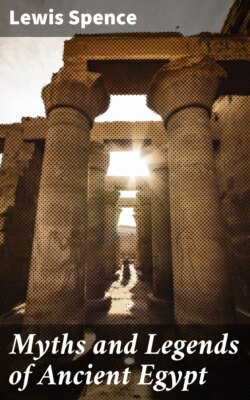Читать книгу Myths and Legends of Ancient Egypt - Lewis Spence - Страница 38
На сайте Литреса книга снята с продажи.
ОглавлениеRāhetep, a Priest. (IVth or Vth Dynasty)
The duties of the priesthood were arduous. A most stringent and exacting code had to be followed so far as cleanliness and discipline were concerned. Constant purifications and lustrations succeeded each other, and the garb of the religious must be fresh and unspotted. It consisted entirely of the purest and whitest linen, the wearing of woollen and other fabrics being strictly forbidden, and even abhorred. The head was closely shaven, and no head-dress was worn. The priest's day was thoroughly mapped out for him. If he was on duty, he duly washed himself and proceeded to the Holy of Holies, where he repeated certain formulæ, accompanying them by prescribed gestures, preparatory to breaking the seal which closed the sanctuary. Standing face to face with the god, he prostrated himself, and after performing other ritualistic offices he presented the deity with a small image of Maāt, the goddess of Truth. The god, powerless before this moment to participate in the ceremonial, was then supposedly regaled with a collation the principal items in which seem to have been beef, geese, bread, and beer, having consumed which he re-entered his shrine, and did not appear until the morning following. In the entire ritual of these morning offerings it would appear that the officiating priest represents Horus, son of Osiris, who, like all dutiful Egyptian sons, sees to the welfare of his father after death. Thus the ritual is coloured by the Osirian myth. The remainder of the day was passed in meditation, the study of various arts and sciences, theoretical and manual, and officiation at public religious ceremonies. Even the night had its duties; for lustration and purification were undertaken in the small hours, the priest being awakened for that purpose about or after midnight.
